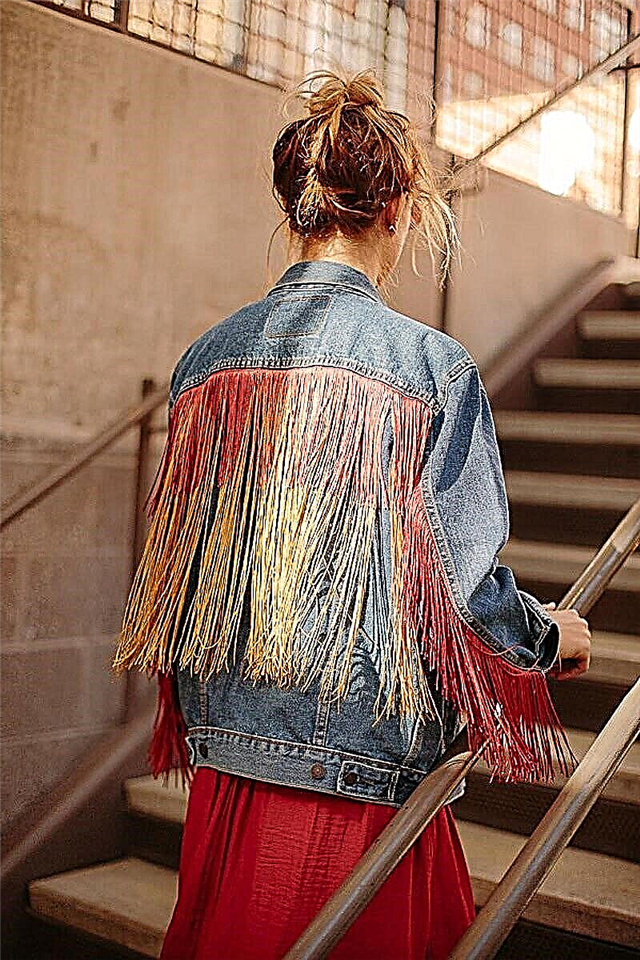If the New Year's bustle has circled around you too, and it seems that you don’t have time to do anything, and you need to sew a festive dress at all costs, there is a way out!

You need a "quick dress"! What is it? The mix is very simple, and most importantly, proven patterns and cool fabric! It can be a piece of luxurious silk, any dress material of bright color or fabric with expressive active print that does not tolerate unnecessary details.
A hint for a quick fix was the collection with expressive art prints "Like a Picture" from the January issue of Burda Style magazine, which became the new Theme of the Month.
We sew summer dresses on patterns Burda: quickly and easily
10 evening dresses that are easy to sew

fabric photo: @ afrita.shop
And the magic wand was cotton with an incredibly beautiful print. I like to sew from cotton and linen, but more often I choose plain colors. And then my choice fell on this African miracle.
For African cotton, it is also called "Ankara" or "Vax", the main characteristic feature is the wax technique of dyeing fabric. This method is a kind of batik, but only of factory origin. Why batik, because the symmetry of bright patterns on the canvas is very arbitrary.
In order for the cotton to get a bright and expressive pattern, the fabric is first driven through a special press, which applies patterns with wax, then it is dyed, then the patterns are again applied and dyed. Thus, a multicolor and complex pattern is created, which is highly resistant to external factors. That is, during washing and socks of the finished product, the fabric does not fade and does not fade in the sun, the brightness of colors and the sharpness of the lines of patterns remain for a very long time. The main thing is not to dry it in a car and not to use bleaching agents.
This is 100% cotton; in products from Ankara it is neither hot nor cold.
What kind of fabric is cotton: properties, care, sewing recommendations
African cotton is similar to its American counterpart, which is very popular in the patchwork world. These claps have a similar density, plain weave and even the width of the fabric is the same, usually 1.1 m or 1.2 m.
But there are still differences, African cotton due to multilayer dyeing has a higher density, but at the same time it is completely not rigid and holds its shape well. This property sometimes allows you to neglect the duplication of such details as, for example, cuffs in a shirt, a neckline or a strap for fastening.

In addition, most Ankara prints are double-sided, which allows you to sew products with flounces and ruffles from this cotton.

fabric photo: @ afrita.shop
Butterfly, flower or "Turkish cucumber" is rarely found among the representatives of the Afroprint, but, on the other hand, rich geometric figures, interesting and even bizarre shapes are abundant, a real space for creativity and wild imagination!
We sew "quick dress"
My pattern is as simple and tested as possible not once, and in a variety of fabrics.
- Special offer

- 1
- 2
- 3
- 4
A couple of evenings or one weekend and a simple holiday dress will be ready!
Step 1

Apply the details of the paper pattern of the back, shelf and sleeves to the fabric and pin it.

Cut out the details with allowances: 1.5 cm in sections and 4 cm for hemming the bottom and sleeves.
Step 2

Since the fabric is mottled, transfer the tucks and all the control marks with a contrast marker or crayon, or marked stitches.
Step 3

Sweep or chuck tucks.
Sew tucks by starting a line from the side cut.
Tighten at the beginning of the seam.
Tie the stitches tight at the top of the tuck and hide the thread inside the tuck.
Remove the mark, cut the ends of the threads.
Iron tuck depths down.
Step 4

Fold the details of the front and back of the dress with the front sides to each other.
Chip or sweep along the side cuts.
Get off.
Step 5

Chop or sweep, and then grind shoulder sections.
Step 6


Overlap seam allowances together on an overlock or in a zigzag stitch on a sewing machine.

Iron the seam allowances, and then iron them on the back.
Step 7
Fold the mini-sleeves.


When cutting the details of the sleeves, I did not have enough fabric for an allowance for bending, so I turned the sections with a strip of main fabric:
How to process a cut of a mini sleeve if there is not enough fabric for hem
Step 8

Sew the stitching lines around the mini-sleeves.


Insert the sleeves into the armholes and pick up.

Then stick it in. Lay the line from the side of the sleeves, so you can monitor the uniform distribution of the assembly.

Tuck in the sleeve allowances and cut the open part of the armhole with a slanting inlay made of silk cambric or any other thin fabric:
Machining a mini-sleeve and half-open armhole
Step 9




Cut the neckline with an oblique trim.
How to sew an oblique edging: 3 ways
Step 10

Process the allowance cut for dress hem on the overlock or in a zigzag stitch on a sewing machine.
Unscrew the allowance on the wrong side, 4 cm wide.


Pin and stitch in the edge.
Step 11

Iron the dress.

One pattern - 6 dresses!

Congratulations to all on the upcoming New Year 2020 and wish you new, interesting and bold sewing projects!
The author of the master class and photo: Julia Dekanova; fabric photo @ afrita.shop



